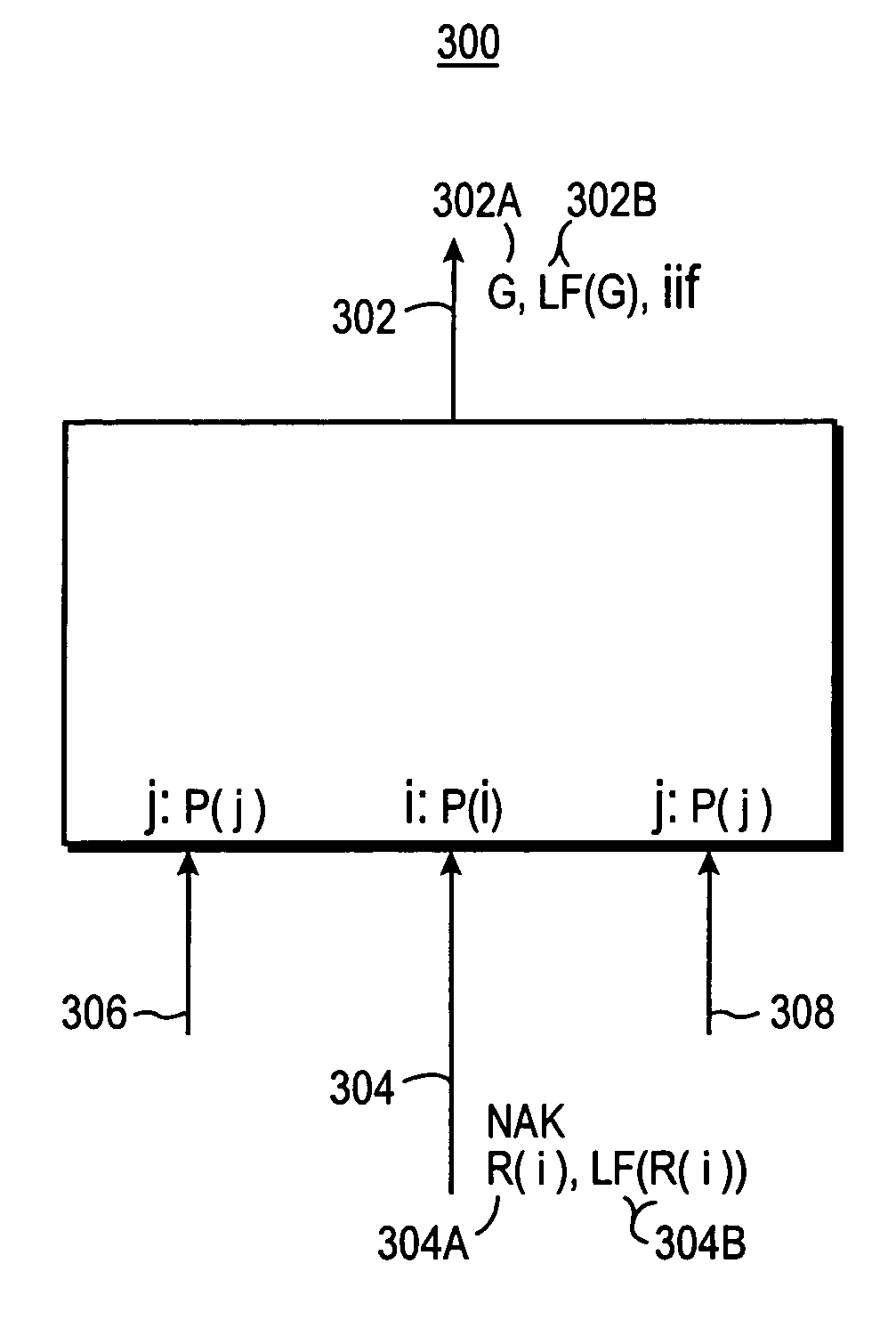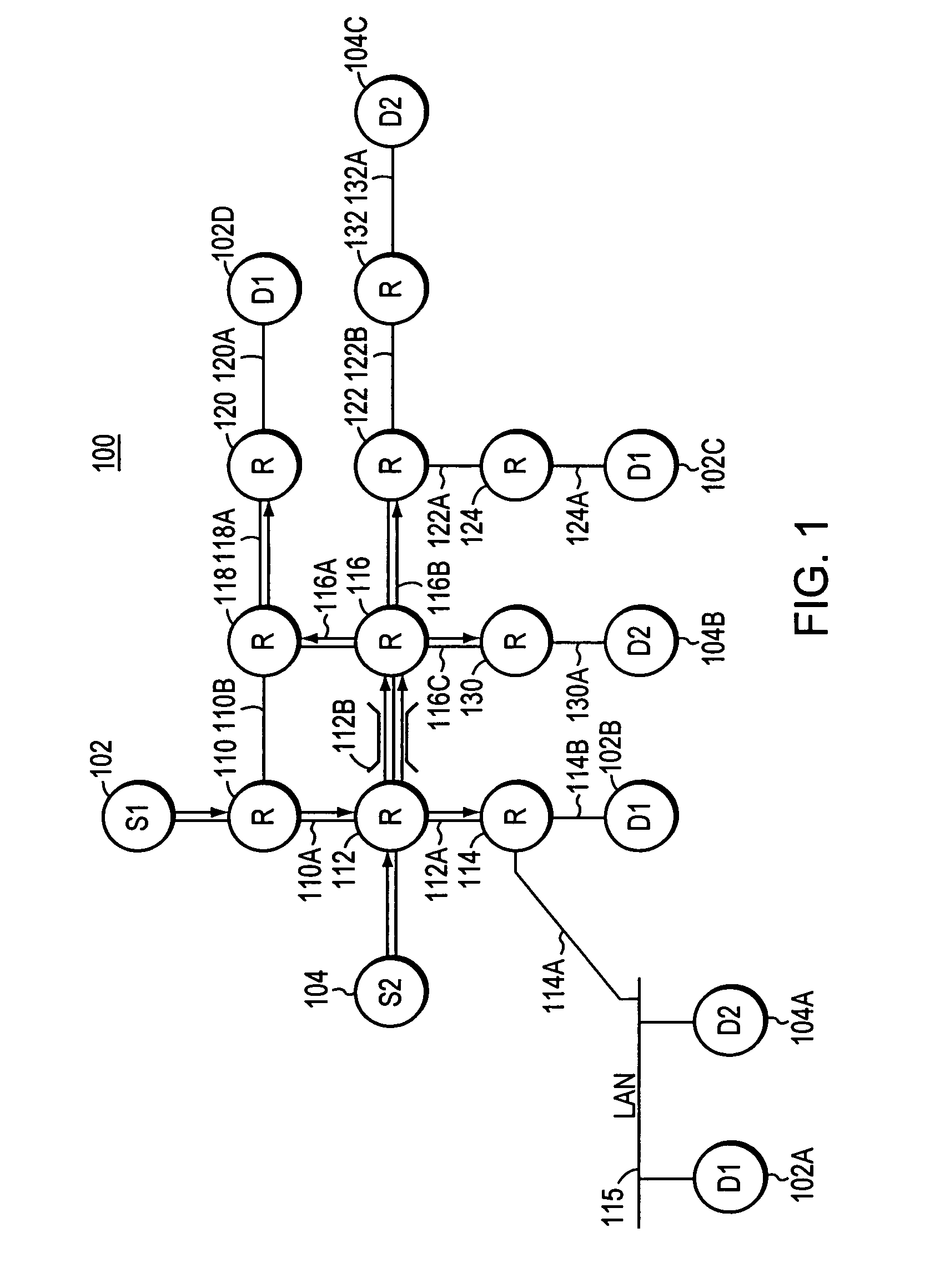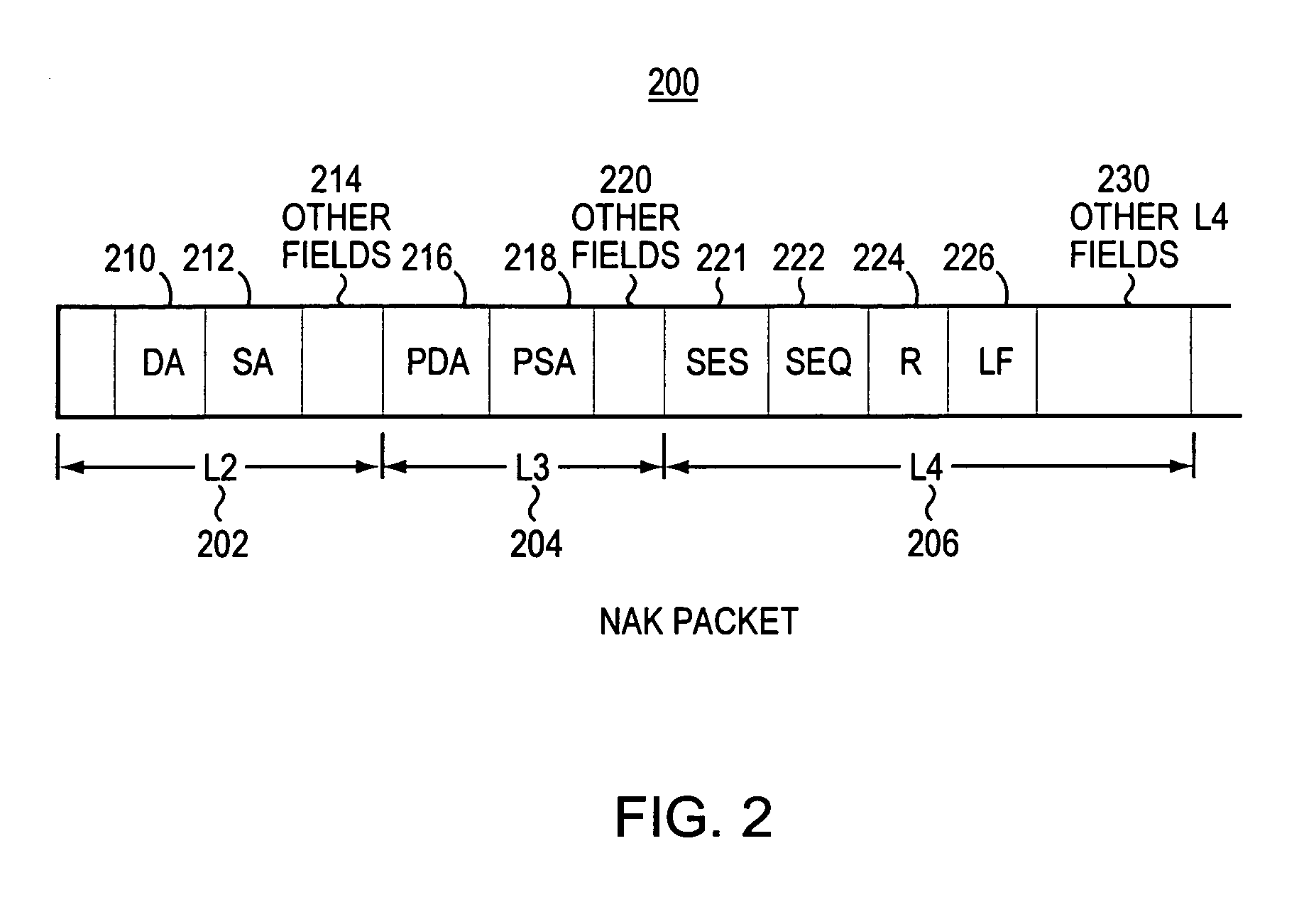Router-assisted multicast congestion control
a multicast and congestion control technology, applied in the field of multicast transfer of packets, to achieve the effect of convenient and expandable methods
- Summary
- Abstract
- Description
- Claims
- Application Information
AI Technical Summary
Benefits of technology
Problems solved by technology
Method used
Image
Examples
first exemplary embodiment
[0024]Turning now to FIG. 1, computer network 100 is shown. For the purpose of this discussion, source stations are indicated by “S”, routers are indicated by “R”, and destination stations are indicated by “D”. Destination stations may also become source stations, etc., and for the purpose of this discussion only, the stations have the indicated roles.
[0025]Source station 102 and source station 104 both are transmitting data packets onto computer network 100. For the purpose of this discussion, both source station 102 and source station 104 are sources of multicast group data packets.
[0026]Source station 102 transmits multicast group packets to the group of stations comprising destination stations marked as group “D1”, for example destination stations 102A, 102B, 102C, 102D, etc. These packets are referred to as group D1 multicast group data packets.
[0027]Further, source station 104 transmits multicast group packets to the group of stations comprising destination stations marked as ...
second exemplary embodiment
[0126]In the FIRST EXEMPLARY EMBODIMENT of the invention, the loss report is carried by a NAK message in reverse up the multicast distribution tree. Alternatively, a generalized loss report message may be used to carry the loss rate from a receiver station to a source station.
[0127]For example, receivers may periodically transmit a loss report message up the multicast distribution tree, rather than wait for receipt of a NAK from a receiver station. Such a loss report message is referred to as a “unsolicited periodic loss report”. An advantage to using an unsolicited periodic loss report is that the periodicity of the message may be used by the multicast system as an indication that the receiver station remains an active receiver station.
third exemplary embodiment
[0128]In the FIRST EXEMPLARY EMBODIMENT of the invention, the computation of the loss rate by a router computes the worst loss rate reported from any of the links connected to the router. The computed loss rate is then forwarded upstream in a loss rate report to the next upstream router. Alternatively, other computational methods may be utilized to compute the loss rate to be forwarded upstream by a router.
[0129]For example, a loss rate at a port of the router may be computed by adding the loss rate received in a loss rate report at the port (LP[received]) to the loss rate measured by the router at that port (LP[measured]). For example, then the largest computed loss rate at any port (in the multicast distribution tree) of the router is written into the loss rate report transmitted upstream to the next higher router in the multicast distribution tree.
[0130]Alternatively, any convenient computational scheme which measures the loss rate experienced by the router, based on received and...
PUM
 Login to View More
Login to View More Abstract
Description
Claims
Application Information
 Login to View More
Login to View More - R&D
- Intellectual Property
- Life Sciences
- Materials
- Tech Scout
- Unparalleled Data Quality
- Higher Quality Content
- 60% Fewer Hallucinations
Browse by: Latest US Patents, China's latest patents, Technical Efficacy Thesaurus, Application Domain, Technology Topic, Popular Technical Reports.
© 2025 PatSnap. All rights reserved.Legal|Privacy policy|Modern Slavery Act Transparency Statement|Sitemap|About US| Contact US: help@patsnap.com



